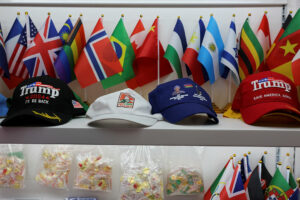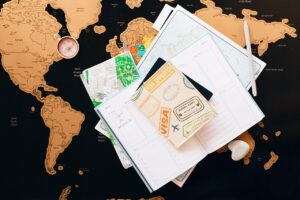UNCERTAINTIES from US trade policies could impact investment flows in emerging markets (EMs), S&P Global Ratings said in a report, as well as prompt central banks to remain cautious.
“Increased uncertainty surrounding US trade policy may delay investment decisions and impact emerging markets linked to countries that have been targeted by US tariffs.”
US President Donald J. Trump is seeking to impose reciprocal tariffs across all countries that tax US imports, fueling fears of a global trade war.
“Trade flows could be brought forward in anticipation of future tariff impositions,” the credit rater added.
The United States is typically the Philippines’ top destination for exports.
“EM central banks are likely to adopt a cautious approach to monetary policy normalization, as the US dollar strength could exacerbate capital outflows if interest rates are cut too aggressively,” S&P Global said.
Aggressively lowering borrowing costs could “amplify capital outflows from EMs,” it added.
The Bangko Sentral ng Pilipinas (BSP) last week decided to keep interest rates on hold, citing global uncertainties stemming from the US’ proposed tariff plans.
“Trade tariff threats represent the main source of downward risk for EMs, along with an uncertain path for the Fed’s monetary easing, which may lead to worsening financing conditions across EMs in 2025,” it added.
Meanwhile, Nomura Global Markets Research said that higher nontariff barriers “increase the likelihood of the reciprocal tax being imposed across a broader swath of emerging and developed Asian economies.”
These countries may need to arrange bilateral agreements with the United States, it said in a report.
Reuters reported that Mr. Trump has signed a memo ordering his team to start calculating duties to match those other countries charge and to counteract nontariff barriers such as vehicle safety rules that exclude US autos and value-added taxes that increase their cost.
“US reciprocal tariffs will be levied not just based on tariffs imposed by partner countries, but also the VAT, exchange rate deviation from market value and nontariff barriers,” Nomura said.
“Unlike tariffs, nontariff barriers are harder to quantify. They include import policies, sanitary and phytosanitary measures, technical barriers to trade, export subsidies, a lack of intellectual property protection, etc.”
Nomura said the Philippines, China, India, Indonesia, and Thailand are among the economies with higher nontariff barriers.
The Philippines’ nontariff barriers include rules prohibiting used motor vehicle imports; burdensome requirements to submit a utilization report concerning ingredients used in the manufacture of animal feed; requirements to obtain import permits; and cold chain regulations.
“Now, with reciprocal tariffs likely to also be used against nontariff barriers, along with other factors like the value-added tax and currency manipulation, this creates another level of opacity on how the reciprocal tariffs will be estimated across countries and products,” Nomura said. — Luisa Maria Jacinta C. Jocson






